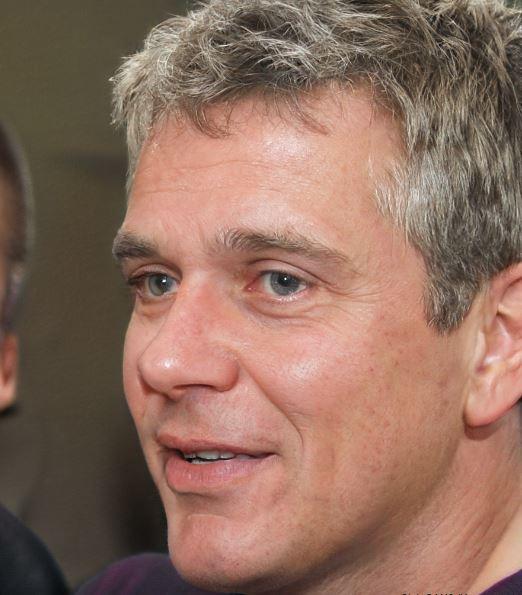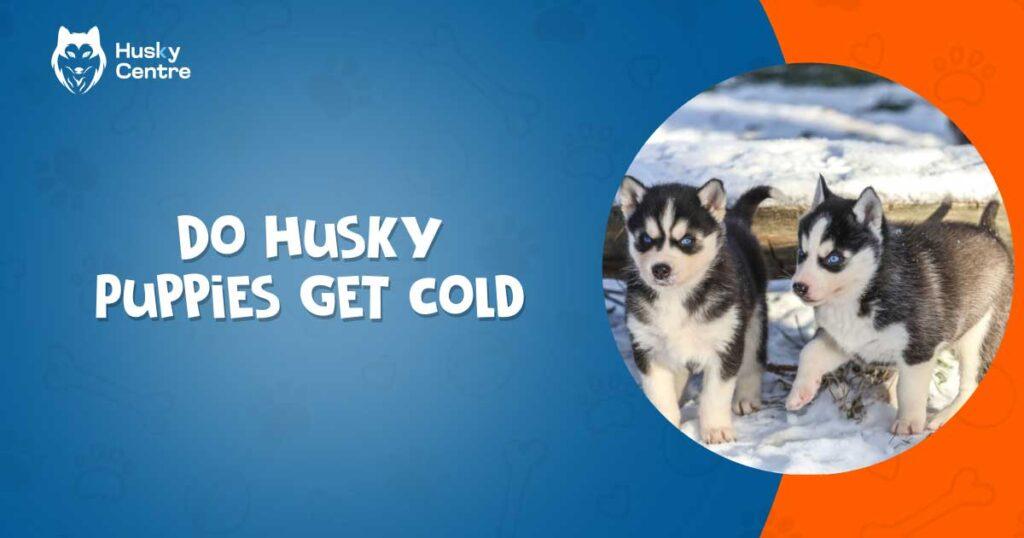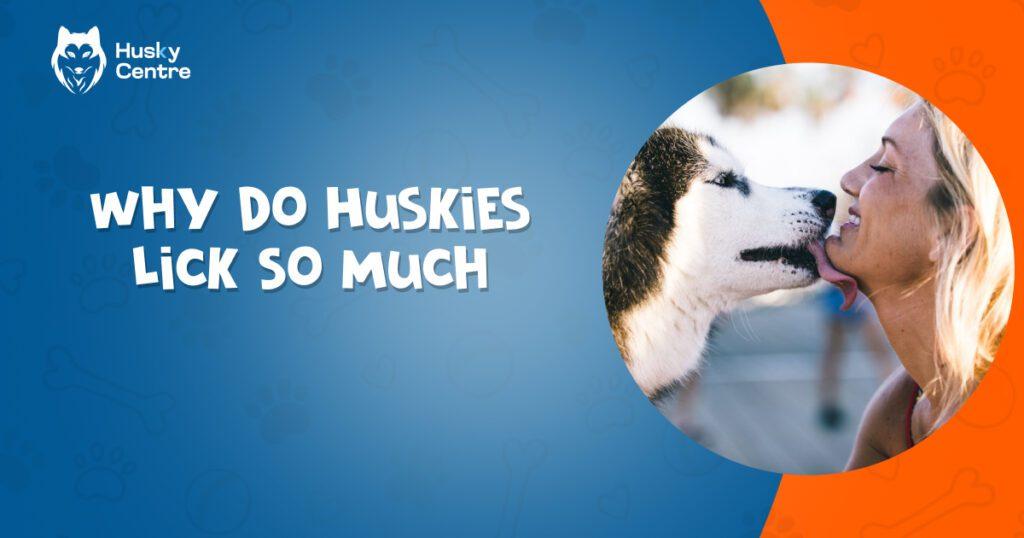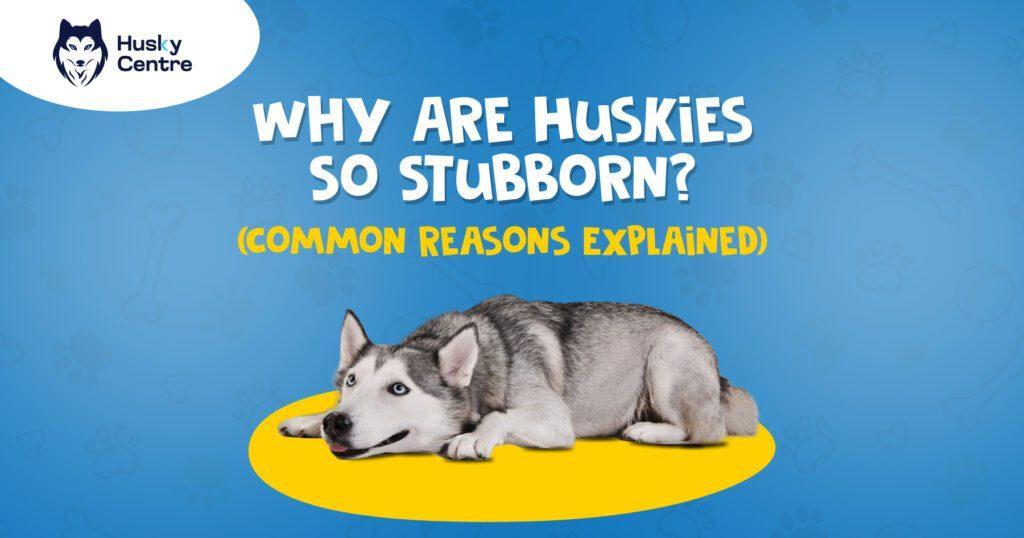Yes, Husky puppies can get cold. Despite their thick fur, they are still vulnerable to extreme temperatures.
Husky puppies, known for their dense double-layered coat, are generally well-equipped to handle cold climates. Their origin in Siberia means they have a natural resistance to chilly weather. However, young puppies may not have developed their full coat yet and can be sensitive to freezing temperatures.
It’s crucial to monitor them closely and provide adequate warmth, especially during harsh winters. Indoor shelter, warm bedding, and proper nutrition can help keep Husky puppies comfortable. While adult Huskies are more adept at dealing with the cold, puppies need extra care to ensure they stay warm and healthy during their early stages of life.
Siberian Husky’s Double Coat
The Siberian Husky is known for its stunning appearance and energetic personality. One of their most remarkable features is their double coat. This unique coat helps protect them from extreme cold. But do Husky puppies get cold despite this protective layer?
What Is A Double Coat?
A double coat consists of two layers of fur. The undercoat is soft and dense, providing insulation. The outer coat is longer and water-resistant. This combination helps Siberian Huskies endure harsh weather conditions.
Why Is The Double Coat Important?
The double coat serves two main purposes. It keeps the puppy warm in winter and cool in summer. The undercoat traps warm air close to the skin. Meanwhile, the outer coat repels water and snow.
Do Husky Puppies Have A Double Coat?
Yes, Husky puppies are born with a double coat. However, it is not as developed as an adult Husky’s coat. The undercoat grows thicker as they mature, offering better protection against the cold.
Can Husky Puppies Get Cold?
Husky puppies can get cold, especially if they are very young. Their double coat is still developing, making them more vulnerable to lower temperatures. It is important to provide a warm environment for young puppies.
How To Keep Husky Puppies Warm
- Provide a cozy bed with blankets.
- Ensure they stay indoors during extreme cold.
- Use a doggy sweater for extra warmth.
- Feed them nutritious food to boost their energy levels.
Signs Your Husky Puppy Is Cold
Look out for these signs to know if your Husky puppy is cold:
- Shivering or trembling.
- Curling up tightly.
- Whining or whimpering.
- Seeking warm places or human contact.
Age And Cold Tolerance
As Huskies age, their tolerance to cold improves. An older Husky puppy will handle cold weather better than a newborn. Always monitor your puppy’s reaction to cold weather, regardless of age.
Factors Influencing Cold Tolerance In Husky Puppies
Husky puppies are known for their resilience and ability to thrive in cold climates. Yet, their tolerance to cold can vary based on several factors. Understanding these factors is vital to ensure their well-being. Let’s dive into the primary factors influencing cold tolerance in Husky puppies.
Age
Age significantly impacts a Husky puppy’s ability to withstand cold temperatures. Young puppies, especially those under eight weeks, lack the full development needed for optimal cold tolerance. During this period, they have:
- Underdeveloped coat: Their fur is thinner and doesn’t provide adequate insulation.
- Limited fat stores: Fat provides an essential barrier against cold.
- Immature thermoregulation: Puppies can’t regulate their body temperature effectively.
As puppies grow older, their ability to tolerate cold improves. By the time they reach six months, they develop better thermoregulation and grow a thicker coat. Older puppies can handle colder environments more effectively. Here’s a brief table summarizing age and cold tolerance:
| Age | Cold Tolerance |
| 0-8 weeks | Very Low |
| 2-6 months | Moderate |
| 6 months+ | High |
Coat Development
A Husky’s coat is its primary defense against cold. Husky puppies are born with a soft, thin coat. This initial coat is not enough to keep them warm in extreme cold. Over time, their coat undergoes significant changes. Key stages include:
- Puppy Coat: Soft and fluffy, providing minimal insulation.
- Transition Coat: Around three to four months, their coat starts thickening.
- Adult Coat: By six months, most Husky puppies have a double coat. This double coat comprises a dense undercoat and a longer, protective outer layer.
The double coat is crucial. The undercoat traps air, providing insulation. The outer coat repels moisture and snow. Regular grooming helps maintain the coat’s effectiveness. Brushing removes loose fur and prevents matting, ensuring the coat remains thick and warm.
Health And Nutrition
Health and nutrition play a pivotal role in a Husky puppy’s cold tolerance. Healthy puppies have a better immune system and energy levels, allowing them to generate more body heat. Ensure your puppy receives:
- Balanced diet: High-quality puppy food rich in proteins, fats, and essential nutrients.
- Regular vet check-ups: Monitor health and address any concerns promptly.
- Vaccinations: Protect against diseases that might weaken their immune system.
Nutrition directly influences their fat stores. Adequate fat acts as an insulation layer. Puppies with a balanced diet develop a thicker coat and have more energy to stay warm. Here’s a simple diet plan:
| Age | Diet |
| 0-2 months | Mother’s milk or puppy formula |
| 2-6 months | Puppy food rich in proteins and fats |
| 6 months+ | Transition to adult dog food |
Acclimation
Acclimation is the process by which a Husky puppy gradually gets used to cold temperatures. Sudden exposure to extreme cold can be harmful. To acclimate your puppy:
- Gradual Exposure: Start with short periods outside. Gradually increase the duration.
- Monitor Behavior: Watch for signs of cold stress, such as shivering or reluctance to move.
- Provide Shelter: Ensure they have a warm place to retreat if needed.
Consistent exposure helps their body adapt. Their metabolism will increase, and they will grow a thicker coat.
Mental stimulation also plays a role. Engaging in outdoor activities keeps them active and helps in acclimation. Ensure they have protective gear like dog sweaters or boots during the initial stages.
Signs That A Husky Puppy Is Cold
Husky puppies are known for their thick fur, but they can still get cold. Recognizing the signs that a Husky puppy is cold ensures you keep your furry friend comfortable and healthy. This section will help you identify when your Husky puppy might need extra warmth.
Shivering
One of the most obvious signs is shivering. If your Husky puppy is shivering, they are likely cold. Make sure to provide them with a warm blanket or bring them inside.
Whining Or Whimpering
Another sign to watch for is whining or whimpering. If your puppy is making these noises, they may be uncomfortable due to the cold. Pay attention to their behavior and provide warmth.
Cold Ears And Paws
Check your puppy’s ears and paws. If they feel cold to the touch, your Husky puppy may need extra warmth. Ensure they have a warm place to rest.
Lethargy
If your Husky puppy is more lethargic than usual, it could be a sign they are cold. Puppies will conserve energy to stay warm, so notice any changes in their activity levels.
Curling Up Tightly
When a Husky puppy feels cold, they may curl up tightly to conserve body heat. If you see this behavior, offer them a warm spot to relax.
Seeking Warm Places
Observe if your puppy is seeking out warm places like under blankets or near heaters. This behavior indicates they are trying to stay warm and may need more warmth.
Reluctance To Move
If your Husky puppy is reluctant to move or seems stiff, they might be cold. Encourage them to move to a warmer area or provide extra layers.
| Sign | Description |
| Shivering | Puppy visibly shaking |
| Whining or Whimpering | Vocal signs of discomfort |
| Cold Ears and Paws | Body parts feel cold to touch |
| Lethargy | Low energy levels |
| Curling Up Tightly | Puppy curls up to stay warm |
| Seeking Warm Places | Puppy moves to warmer spots |
| Reluctance to Move | Puppy seems stiff or hesitant |
Tips For Keeping Husky Puppies Warm
Husky puppies have thick fur coats that help them stay warm, but they can still feel the cold, especially in extreme weather conditions. Ensuring your Husky puppy stays warm is crucial for their health and happiness. Here are some essential tips for keeping your Husky puppy warm during the colder months.
Keep Their Living Space Warm
Make sure your puppy’s living area is warm and cozy. Use a heated dog bed or blankets to provide extra warmth. Maintain a consistent indoor temperature, ideally between 68-72°F.
Use Insulated Dog Houses
If your Husky puppy spends time outside, provide an insulated dog house. Ensure it’s elevated off the ground and protected from wind and rain. Add straw or blankets for added insulation.
Dress Them In Warm Clothing
Invest in high-quality dog sweaters or jackets. These can help keep your Husky puppy warm during outdoor activities. Make sure the clothing fits well and is comfortable for your puppy to move in.
Monitor Outdoor Time
Limit the time your puppy spends outside in cold weather. Short, frequent outings are better than long periods. Always dry your puppy off when they come back inside to prevent them from getting chilled.
Provide A Nutritious Diet
A well-balanced diet helps your puppy maintain their body heat. Ensure they get enough calories to support their energy needs. Consult your vet for the best dietary options for your Husky puppy.
Exercise Regularly
Regular exercise keeps your puppy active and helps regulate their body temperature. Play indoor games if the weather outside is too harsh. Keep them moving to generate body heat.
Check For Signs Of Cold
Always watch for signs that your puppy is cold. Shivering, whining, and lifting paws off the ground are indicators. If you see these signs, bring your puppy inside immediately and warm them up.
Table: Ideal Indoor Temperatures For Puppies
| Temperature (°F) | Comfort Level |
| 68-72 | Optimal |
| 60-67 | Acceptable |
| <60 | Too Cold |
Exercise And Cold Weather
Husky puppies are known for their thick fur coats, which might make you wonder if they ever get cold. Understanding how exercise and cold weather affect them is crucial for their well-being. Regular exercise is essential for their health, but it can be challenging in cold conditions. Let’s explore how to manage this.
Exercise In Cold Weather
Huskies are built for cold weather. Their double-layered coat keeps them warm.
Exercise is vital for their physical and mental health. Even in cold weather, they need daily activity.
How Cold Is Too Cold?
Husky puppies can tolerate cold weather, but extreme temperatures can be harmful. Always monitor the temperature. If it drops below -20°F (-29°C), keep them inside.
| Temperature | Activity Level |
| Above 20°F (-6°C) | Regular exercise |
| 0°F to 20°F (-18°C to -6°C) | Shorter exercise periods |
| Below 0°F (-18°C) | Minimal outdoor activity |
Signs Of Cold In Husky Puppies
- Shivering
- Whining or vocalizing
- Seeking warmth or shelter
- Slow movements
If you notice these signs, bring your puppy inside immediately. Warm them up gradually.
Protective Measures
Consider protective gear for your Husky puppy. Dog coats and booties can help. Ensure they stay dry to prevent hypothermia. Wet fur can make them cold quickly.
Indoor Exercise Options
On extremely cold days, opt for indoor activities. Play fetch in a hallway. Use puzzle toys to keep them engaged. Interactive games can also provide mental stimulation.
Feeding And Hydration
Husky puppies, with their thick fur, are often assumed to be immune to cold. Yet, even these fluffy pups can feel the chill.
Proper feeding and hydration are crucial to help them maintain body warmth and energy levels during colder months.
Feeding Your Husky Puppy
Feeding your Husky puppy a nutritious diet is essential. High-quality dog food with balanced nutrients helps them generate body heat. Look for foods rich in protein and fats. These macronutrients provide sustained energy and warmth.
- Protein: Vital for muscle development and energy.
- Fats: Provide long-lasting energy and help with insulation.
- Carbohydrates: Offer quick energy boosts.
Feed your puppy small, frequent meals to keep their metabolism active. Puppies need more calories than adult dogs, especially in the cold.
Hydration Tips
Hydration is just as important as feeding. Puppies can get dehydrated quickly, even in cold weather. Ensure your Husky puppy always has access to fresh, clean water.
Check their water bowl frequently. Water can freeze in cold temperatures. Use a heated water bowl if necessary to keep their water from freezing.
Special Treats For Cold Weather
Cold weather treats can help keep your puppy warm and happy. Here are some ideas:
- Warm Broth: Add low-sodium chicken or beef broth to their food.
- Peanut Butter: A small amount of peanut butter can be a high-energy snack.
- Pumpkin Puree: Rich in fiber and vitamins, it can be a tasty, warming treat.
Feeding Schedule
A consistent feeding schedule is vital for your puppy’s health. Here’s a sample feeding schedule for a Husky puppy:
| Meal Time | Activity |
| 7:00 AM | Breakfast – High-protein meal |
| 12:00 PM | Lunch – Balanced meal with protein and fats |
| 5:00 PM | Dinner – Nutritious and warming meal |
| 8:00 PM | Evening Snack – Small treat or warm broth |
Signs Of Poor Nutrition
Watch for signs that your puppy might not be getting enough nutrients:
- Weight Loss: Sudden or unexplained weight loss.
- Lethargy: Low energy levels or reluctance to play.
- Dry Coat: A dry or brittle coat could indicate poor nutrition.
If you notice any of these signs, consult your veterinarian. Proper feeding and hydration are key to keeping your Husky puppy warm and healthy during cold weather.
Special Considerations For Very Young Puppies
Husky puppies are known for their thick fur and ability to withstand cold temperatures. Yet, very young puppies need extra care. Their bodies are still growing, and they can’t regulate their temperature well. Special care is essential to keep them warm and safe.
1. Temperature Regulation
Newborn Husky puppies can’t regulate their body temperature. They rely on their mother and their surroundings to stay warm. It’s important to keep them in a warm environment, around 75-80°F (24-27°C).
2. Bedding And Warmth
Provide soft, warm bedding for very young puppies. Use materials like fleece or a soft blanket. Make sure the area is draft-free. A heating pad set on low can be placed under the bedding, but always monitor the temperature to avoid overheating.
3. Nutrition And Hydration
Proper nutrition is crucial for young puppies. Ensure they are nursing well or being fed a suitable puppy formula. Hydration helps maintain their body temperature. Watch for signs of dehydration, such as dry gums or lethargy.
4. Health Monitoring
Regularly check their health. Look for signs of illness, like coughing or sneezing. Keep an eye on their weight gain and growth. Consult a vet if any concerns arise.
5. Socialization And Comfort
Young puppies need comfort and warmth from their mother and littermates. Ensure they stay together as much as possible. Human interaction should be gentle and warm to help them feel secure.
| Consideration | Details |
| Temperature Regulation | 75-80°F (24-27°C) |
| Bedding | Soft, warm, draft-free |
| Nutrition | Nursing or suitable formula |
| Health Monitoring | Check for illness, weight gain |
| Socialization | Stay with mother and littermates |
Myths And Misconceptions
Husky puppies, known for their striking blue eyes and fluffy coats, are often thought to be immune to cold weather. But do husky puppies really get cold? Understanding the myths and misconceptions surrounding their tolerance to cold is crucial for ensuring their well-being.
Myth: Husky Puppies Never Get Cold
Many people believe that husky puppies are completely immune to cold weather. This is not true. Although they have thick fur, husky puppies can still feel the chill. Their coat provides some protection, but they are not invincible. Like all puppies, they need warmth and care, especially in extreme cold.
Myth: All Husky Puppies Are The Same
Another common misconception is that all husky puppies have the same level of cold tolerance. This varies. Some may have thicker fur, while others may be more sensitive. Each puppy is unique and may react differently to cold temperatures. Always observe your husky puppy to ensure they are comfortable.
Misconception: Indoor Huskies Don’t Need Extra Warmth
People often think that huskies kept indoors don’t need extra warmth during winter.
Indoor husky puppies still need warmth. Even if they are inside, cold drafts and low temperatures can affect them. Provide a warm bed and blankets to keep them cozy.
Misconception: Husky Puppies Love Snow All The Time
It’s easy to assume husky puppies love snow because they are a cold-weather breed. Not all husky puppies enjoy snow.
Some may find it fun, but others might dislike the cold and wet conditions. Always monitor their behavior in snowy environments to ensure they are comfortable.
Myth: Thick Fur Means No Need For Extra Care
The thick fur of husky puppies leads many to believe they don’t need extra care in winter. Thick fur does help, but additional measures like proper shelter and nutrition are vital.
Ensure they are well-fed to maintain body heat and provide a warm shelter to protect them from harsh conditions.
Frequently Asked Questions
Do Husky Puppies Get Cold Easily?
Husky puppies can get cold despite their thick fur. They may need extra warmth in harsh conditions. Always monitor them.
How To Keep Husky Puppies Warm?
Provide a cozy bed, blankets, and warm shelter. Avoid prolonged exposure to cold weather. Monitor their comfort.
Can Husky Puppies Stay Outside In Winter?
Husky puppies shouldn’t stay outside for long in winter. Their small size makes them vulnerable to extreme cold.
What Temperature Is Too Cold For Husky Puppies?
Temperatures below 32°F (0°C) can be too cold for husky puppies. Always ensure they have a warm place to stay.
Conclusion
Husky puppies can get cold, especially in harsh weather conditions. Providing proper shelter and warmth is essential. Keep your husky comfortable with cozy bedding and regular check-ins. Always monitor their behavior for signs of discomfort. A warm, well-cared-for husky puppy will thrive in any environment.


Meet Jarred, the heart and soul behind HukyCentre. With a deep affection for furry friends, he pours his passion into every word he writes. His genuine love for dogs shines through in his engaging and informative content. As a dedicated dog enthusiast, Jarred’s goal is to share valuable insights and tips that resonate with fellow dog lovers. Join Jarred on the journey as he celebrates the joy and companionship that dogs bring into our lives.



